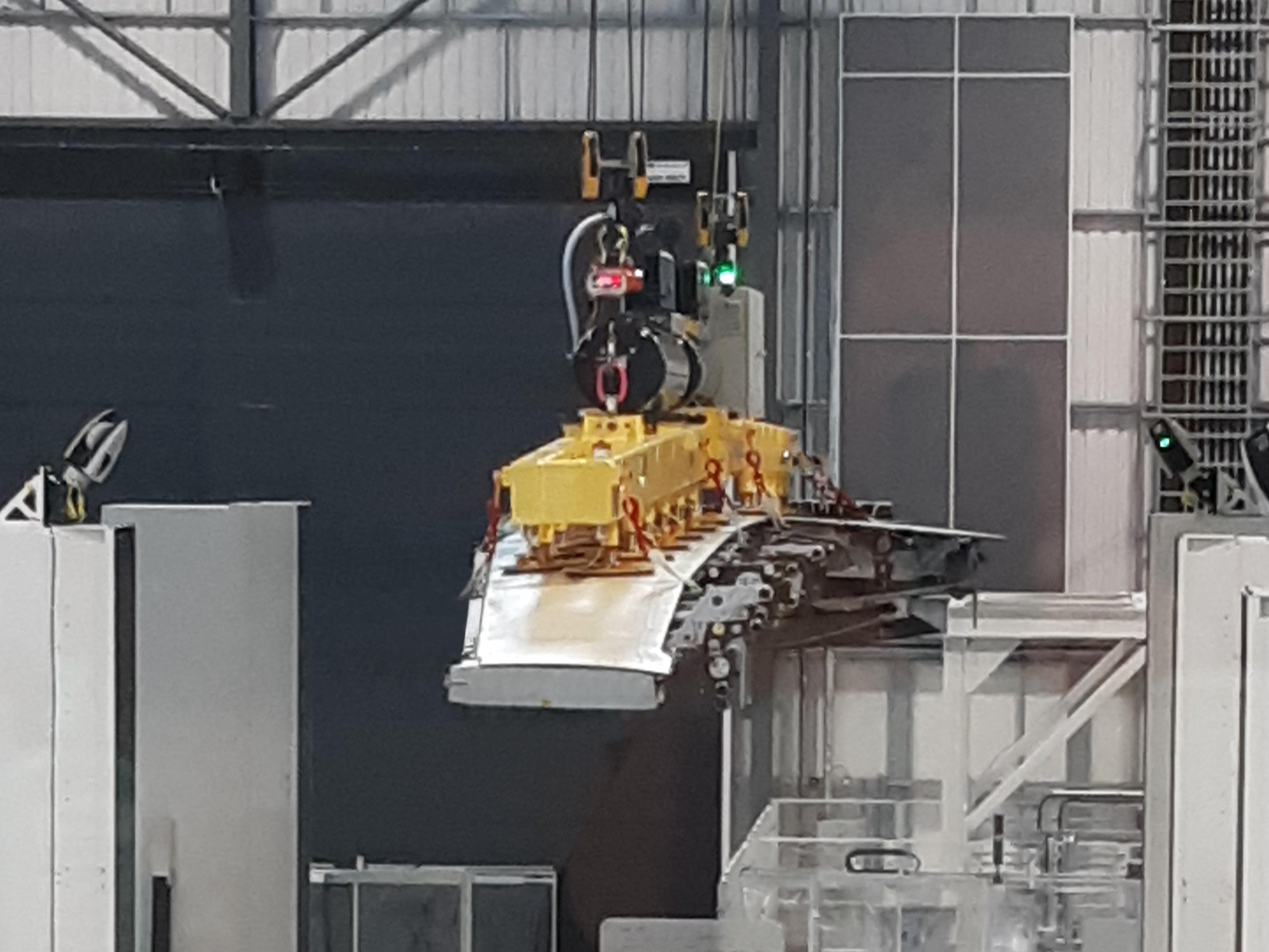
FARNBOROUGH—Airbus has announced that its Wing of Tomorrow team has completed the first of three prototype demonstrators.
“Wing of Tomorrow is about preparing our technologies, preparing our people, preparing our supply chain, and also [making] our physical and digital capabilities ready for our future generation of Airbus aircraft,” says Sue Partridge, head of the program. “Today’s completion of our first wing assembly marks a key milestone along that journey.”
The program, launched in 2016, has been investigating the design, manufacture and industrialization aspects of novel wing concepts, as well as designing for increased performance and lower weight. The demonstrators incorporate over 100 different technologies, some of which may be applicable to extant programs, while others may only find applicability on aircraft yet to be designed.
“There’s three main objectives of the technologies we’re developing,” Partridge says. “The first is about aircraft performance. Alongside the engine, the wing is the biggest lever that we have to improve the performance of the aircraft, so the Wing of Tomorrow demonstrators are focused on looking at selecting a wing architecture that really, really gives us low drag, good lift, very, very good fuel efficiency, and long wings, which drive us towards needing to develop the folding wing tip technology.”
“There’s two other key objectives of the program overall, and they’re very much around our industrial targets [and] cost performance,” she continues. “How can you make a high-performance carbon wing—in order to make a weight reduction—at a low cost? And ... the technologies that we develop need to be capable of being manufactured at a high rate. We’re understanding through developing the technologies and integrating them together what might be the bottlenecks to prevent us from using those technologies on a high-production-rate aircraft.”
The first prototype wingbox was designed at Airbus’ site in Filton, England—which Partridge is head of—and has been assembled at the Advanced Manufacturing Research Center at the company’s plant in Broughton, Wales. Testing will take place at Filton.
The folding wing tip has not yet been fitted; this work will take place at Airbus’s site in Broughton. “In terms of the assembly of the wingbox itself, it doesn’t have a huge effect,” Partridge says. “Although you have the fittings in the wing, the actual installation of the folding wingtip would happen as a second step. It’s a key part of the program but not really a huge driver of the main wingbox assembly itself.”
Each of the three prototypes has a different purpose. And, while each is based on the same architecture and design, there are differences between them. “We have some differences in technologies, because we’re working with different partners, and some partners are delivering three components—one for each of the wings—and the others only one,” Partridge says. “There are some minor differences in the technology bricks in terms of the industrial system we’re gradually building. We have lots of automation technologies we’re deploying, but we’re doing that, some on the first one then building for the second and building for the third to make the progression manageable.”
“The purposes of the three boxes are different,” she adds. “The first one will become our fully equipped box, where we will test our installation technologies as well as our structural technologies; the second one will go down to Filton and be structurally tested at full scale; and the third one is called our ‘run at rate’ box, where we’ll have the full industrial system deployed, and we’ll really be testing the constraints of those industrial technologies and those automation packages to see what the art of the possible is.”

